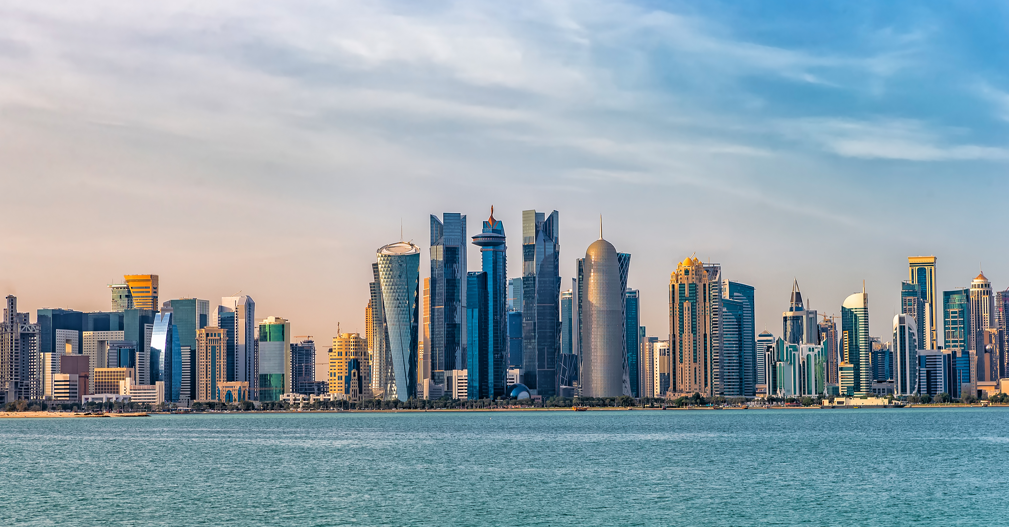By Sara Owen, Senior Project Manager, Turner & Townsend, Qatar
The construction of buildings and infrastructure accounts for approximately 20 percent of global carbon emissions annually. To reach net-zero carbon construction by 2050, companies need to find ways to reduce carbon emissions across the construction value chain. Like the rest of the world, Qatar aims to reduce its carbon footprint by targeting the highest emitters: flaring gas, oil, and cement production.
Even with a decarbonisation of industries, sea levels are predicted to rise, meaning most of the Middle East’s coastline is at risk. The IPCC (Intergovernmental Panel on Climate Change) predicts global sea levels will increase by 52-98 cm by 2100. The risk is not only from inundation but contamination of water supply infrastructure, several onshore operations, and the risk of salination of the water supply system.
 When tackling climate change, the issue could not be more urgent; however, the key to reducing carbon emissions and combating climate change is a collaboration of industries and their value chains.
When tackling climate change, the issue could not be more urgent; however, the key to reducing carbon emissions and combating climate change is a collaboration of industries and their value chains.
Qatar’s construction sector is committed to addressing the growing demand for public services, and in doing so, it is seeking innovative ways to deliver infrastructure and real estate. This demand is being backed by government funding and redefined ecosystems that help construction organisations find mutually beneficial partnerships and shared investments that can accelerate emission reductions.
Over the past few years, we have seen a significant drive for sustainable practices in the Qatar construction sector; this has been embedded in multiple large-scale state-owned construction projects. The overall industry has set new benchmarks and highlighted a few fundamental strategies that need to be implemented more effectively.
Solar power in the net zero mix
Qatar’s solar energy future is steadily developing. With average daily sunshine of around 9.5 hours, low-cloud cover conditions, and plentiful space, there is excellent scope for the country’s
small, medium, and large-scale solar power projects.
Qatar is not just looking at the short-term; the construction of a utility-scale solar power plant with a capacity of up to 500MW, the third-largest solar power plant in the world, will provide a legacy of clean energy and decarbonisation for long after the tournament, supporting Qatar’s National Vision 2030. As the demand for solar continues to rise, the construction industry will need to expand and evolve. Solar power will be an integral part of green building techniques going forward.
Whole life carbon – a key criteria
As investors and developers place sustainability outcomes higher on their strategic priorities, it is crucial for construction industry stakeholders to help align project teams with their sustainable and commercial agendas. Adopting a whole life cycle carbon approach in construction means buildings are conceptualised with sustainability at the forefront of the construction process and energy-efficient systems at the core. Looking at the whole life cycle means considering the origin and transportation of materials to assess the embodied carbon, a combination of recycled and locally sourced materials.
Buildings need to be designed with climate change adaptation in mind. In following a strategy for in-use performance and factoring in the risks of climate change on a building’s future, a whole-life costing analysis can help identify the value of building materials in terms of their contribution to a more useful lifespan.
The Qatar government has implemented the Global Sustainability Assessment System (GSAS), billed as the world’s most comprehensive green building assessment system. Qatar has incorporated QSAS into Qatar Construction Standards 2010, and it is now mandatory for all private and public sector projects to get GSAS certification. The system highlights the importance of implementing a whole-life carbon vision on any construction project.
The potential of prefab
To reach a net-zero world, we must embrace modular construction on a larger scale in the industry. The adoption of modular construction in Qatar is still in its infancy. However, multiple commercial modular projects have been executed over the past five years in Qatar, and the sustainability benefits are clear. The advantages of modular construction are endless; it uses less energy, wastes fewer materials, and results in far lower transportation emissions. It requires much less rework, thanks to more standardised and efficient processes.
Adopting a net zero waste concept
A thorough waste management plan is required to achieve net-zero emissions, a long-standing environmental challenge in Qatar. It is estimated that Qatar produces more than 2.5 million tons of municipal solid waste each year, comprised mainly of organic materials (circa 60 percent), with the rest made up of recyclables like glass, paper, metals, and plastics. Currently, Qatar’s waste management systems handle only 10% of the country’s waste, with a target of 15% solid waste and 20% construction waste by 2022. This figure is low; however, the construction of public infrastructure has seen up to 90% of waste diverted from landfills and designed with operational waste management systems. The innovative approach highlights the advances made in waste management in a short period of time through collaboration in the value chain.
The construction industry will need to evolve as the global knowledge base for net-zero construction expands. Key construction stakeholders will have to look at new best practices and question past methods. It will be an extremely challenging task, but Qatar has set a precedent by achieving carbon neutrality on large-scale construction projects.

